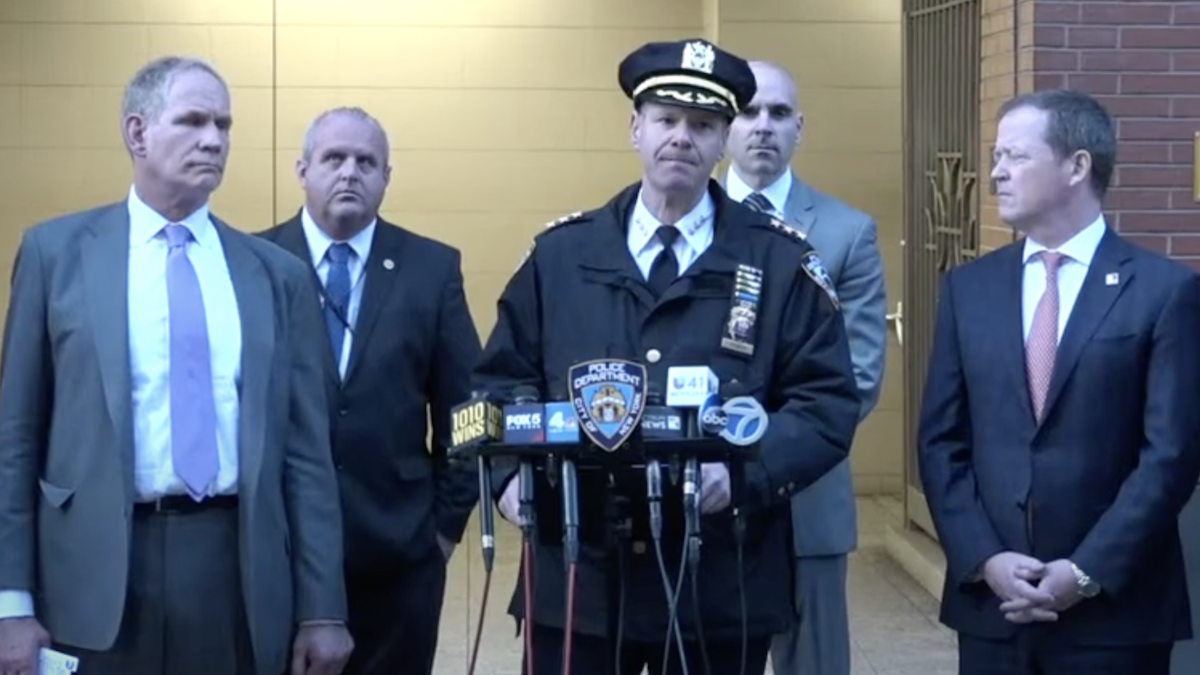
As more information slowly seeps out about Dylann Roof, the 21-year-old who murdered nine people at a church in Charleston, South Carolina, one fact should surprise exactly no one: Roof came from a broken home. Roof’s parents divorced three years before he was even born, later reuniting just long enough to produce a child who would later become a mass murderer.
The media loves to find an easy scapegoat for mass shootings, whether it be the pharmaceutical industry, the National Rifle Association, or even Donald Trump. Of course these scapegoats are designed to fit the politically correct narrative, and they are an easy sell (especially when it’s all Donald Trump’s fault, as Americans increasingly love to blame the proverbial 1 percent for their sorrows). Scapegoats serve another purpose, too: they ensure the media can avoid the uncomfortable truth that unstable homes produce unstable individuals.
We Explore Every Angle Except Father Absence
In the aftermath of tragedies like Charleston or Sandy Hook, Americans hear the shared characteristics of the shooters: typically they are young males who obtained a gun (duh), used drugs (legally or illegally), dropped out of school, and committed or planned suicide as the grand finale to their murders. But to focus on these characteristics is to focus arbitrarily on the 12 to 24 months before the shooting. It ignores the roots of the problem: the household.
As University of Virginia Professor Brad Wilcox pointed out back in 2013: “From shootings at MIT (i.e., the Tsarnaev brothers) to the University of Central Florida to the Ronald E. McNair Discovery Learning Academy in Decatur, Ga., nearly every shooting over the last year in Wikipedia’s ‘list of U.S. school attacks’ involved a young man whose parents divorced or never married in the first place.” His observation is largely ignored.
In contrast, conversations about black-on-black violence often raise the link between broken households (or fatherless homes) and juvenile delinquency. But when the conversation turns to mass shootings, we seem to forget that link altogether.
Now, this isn’t to say that every single mom is doomed to raise a mass shooter. Not every kid who grows up without his father will turn into Roof, and not every mass shooter grew up without his dad. Mental instability can be a product of any number of factors. But to ignore the link between a mass shooter and his fatherless childhood would be to simply ignore the facts. On CNN’s list of the “27 Deadliest Mass Shootings In U.S. History,” seven of those shootings were committed by young (under 30) males since 2005. Of the seven, only one—Virginia Tech shooter Seung-Hui Cho (who had been mentally unstable since childhood)—was raised by his biological father throughout childhood.
Father-Optional Child-Raising
Shortly after the Charleston shooting, Salon ran a sneering article titled “Charleston church massacre: the violence white America must answer for.” Although the article was intended to mock those who bring up the facts at the heart of black-on-black violence, it did raise one good question (even if by accident): “Where are the white fathers in the white home?” Perhaps a better way to phrase it would be “where are the fathers in any home?” In the last 40 years, America increasingly has made the father figure optional in households, with disastrous results.
In his “Politics,” Aristotle rightly declares the household—together, the first communities of man and woman with man and beast—the foundation of society. As the household goes, so goes society. The Founding Fathers, too, believed the stability of the family to be crucial to society. In the words of James Wilson, “the institution of marriage” is the “true origin of society.” In the last few decades, however, American society has either forgotten or rejected the crucial role of the family in society.
Conservatives remember Ronald Reagan as embodying everything good about American conservatism. Few, however, remember that in 1969 Reagan signed into law a bill making California the first state to implement no-fault divorce. No-fault divorce moved the American father onto the fast track towards the exit—from family life. Fathers quickly adjusted to having an optional role in the life of the American child.
So where are we now? In 1960, nine years before Reagan kickstarted the era of the optional-father, only 5 percent of American children were born out of wedlock. Forty years after no-fault divorce entered the United States, a shocking 41 percent of children are born to an unmarried mother. God only knows what the next 40 years will look like.
Links Between Fatherless Homes and Violence
But what does any of this have to do with mass shootings? Let’s revisit some those characteristics of mass shooters. Violence? There’s a direct correlation between fatherless children and teen violence. Suicide? Fatherless children are more than twice as likely to commit suicide. Dropping out of school? Seventy-one percent of high school dropouts came from a fatherless background. Drug use? According to the U.S. Department of Health and Human Services, “Fatherless children are at a dramatically greater risk of drug and alcohol abuse.” How about guns? Two of the strongest correlations with gun homicides are growing up in a fatherless household and dropping out of school, which itself is directly related to lack of an active or present father.
It’s no coincidence that, much like the number of fatherless children, the number of mass shootings has exploded since the 1960s. Throughout the entire 1960s, six mass shootings took place. That number doubled in 1970. Heck, 2012 alone saw more mass shootings than the sixties did.
No-fault divorce is not the only factor pushing fathers out of the household. If no-fault divorce gave fathers a way out of their kids’ lives, redefining marriage from its traditional definition of one man and one woman has officially declared fathers optional. What’s more, if the American household retains any semblance of stability today, things are only going to get worse. As Chief Justice John Roberts pointed out in his dissent, the Supreme Court’s ruling has cleared a massive pathway for state-recognized polygamy.
As noted above, Roof’s parents divorced even before he was born. Not only were Adam Lanza’s parents divorced, but he hadn’t seen his father in the two years before the Sandy Hook shooting. Jeff Weise, the 16-year-old school shooter who killed ten people, came from a depressingly broken home: his parents separated before birth and both his parents were dead before he was even a teenager. The list goes on. From Charleston Churches to the Boston Marathon, the victims change but the narrative remains the same: unstable homes produce unstable individuals. All that remains to be seen is whether we decide to keep destabilizing American homes, or wake up and give our kids the upbringing they deserve.









